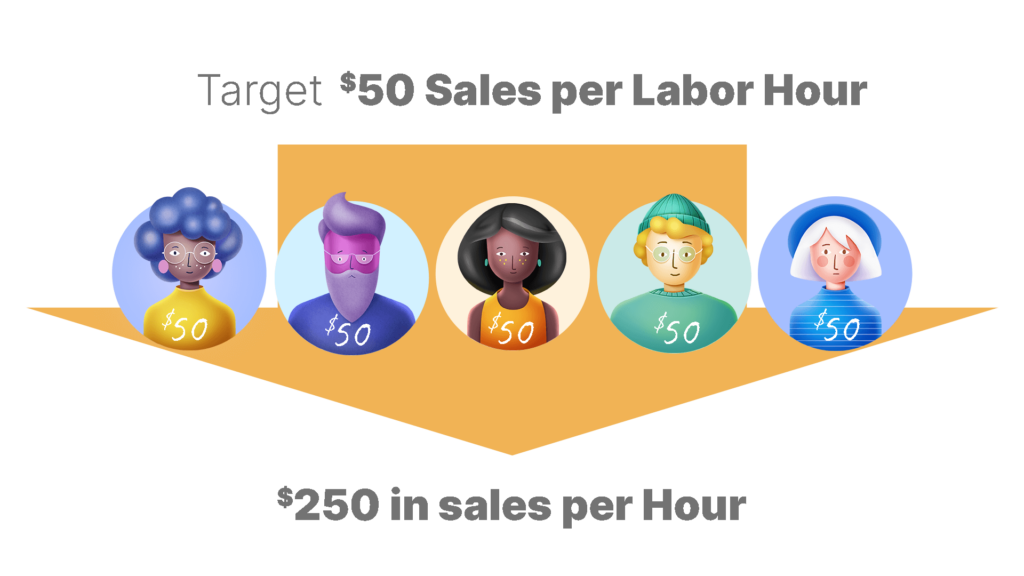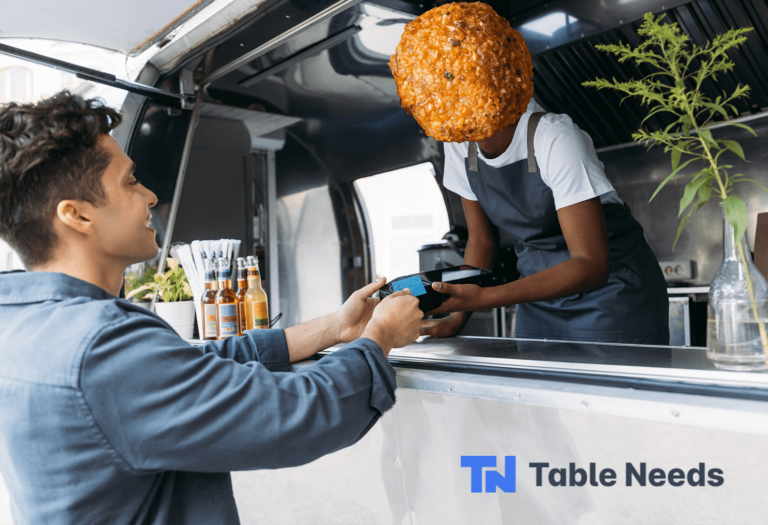Knowing which metrics to monitor can make or break your restaurant business. With so many ways to slice and dice data using your point of sale, there are endless options but only a few metrics are true indicators of the health of your restaurant.
In my experience as a restaurant owner, consultant, and CEO of Table Needs, Sales per Labor Hour is the clearest indicator of whether or not your restaurant is having a healthy day, week, month and even a year.
Knowing Sales per Labor Hour answers the question:
How do I know if sales have been healthy enough to justify the labor that I’m using?
How to Calculate Sales per Labor Hour
Sales per Labor Hour is a Northstar metric. It’s what I rely on to know if my restaurant businesses are healthy – down to the hour – because it gives me a singular number that balances my two largest expenses: food costs and labor costs.
Of these two expenses, labor is the more volatile number. It can change quickly and frequently for a variety of reasons. Ideally, food costs shouldn’t fluctuate too much, although the current supply chain issues are surely affecting this more recently. Inflation and supply chain issues aside, if you manage your menu pricing appropriately and if you don’t have problems like theft or portioning problems, you should know your average food cost within a slim margin of error. For example, in one of my quick service establishments, I know that my average food cost is 31.2% of my total expenditure.
In my stores, I like to target $50 in sales per labor hour. What that means is, if I have five people on staff, and they each work an hour, then I have five labor hours. So I need to make five times $50 in order to hit my target. This means that my restaurant needs to have $250 in sales during each hour that I have 5 staff working.

Now I don’t expect to do that every hour, there are going to be peaks and valleys, but that number informs how I schedule and cut staff. To most people that have been in the restaurant industry for a while, especially in a full-service environment, knowing when to cut staff just becomes second nature. However, in a quick service environment, it can be tempting to reserve staff for when you know you’ll have a rush.
Example: Say you own a coffee shop and in your coffee shop you know that you’re going to be slammed between 6 am-9 am. Scheduling appropriately is essential to handling the rush, but it’s equally essential to mind your Sales per Labor Hour goals. If you’re targeting $50 per labor hour, and you know that on a Monday you typically do $1,000 in sales, you can divide $1,000 in sales by $50. That leaves you with 20 labor hours that you can schedule on Monday.
But wait… maybe 20 labor hours isn’t enough. You really need 30 labor hours on Monday to function at the bare minimum. What do you do then?
No amount of frugality, scrimping, or saving is going to make up for those “extra” 10 hours. You’re not going to save your way into profitability. Instead, you need to find a way to get more sales on Monday so that you can comfortably schedule and pay for all 30 hours. This leads to improving your restaurant marketing strategy to gain more customers, increase sales, and boost your revenue.
Level up your restaurant operations
Operating your restaurant business using Sales per Labor Hour as a Northstar isn’t necessarily a novel concept, however, the restaurant owners that do this are running stronger, healthier businesses. Too many restaurant owners are operating from the seat of their pants, busy with the day-to-day and not working ON their business enough. I get it! But, if you’re ready to level up your restaurant, this is a great place to start.
If you have questions about running a more successful restaurant business, let’s start a conversation. I’m happy to help anybody along their journey, from thinking through their specific concept and what data they should track on a regular basis to what tools would make a big difference in how to retain great employees.
At Table Needs, we’re on a mission to support the quick-service restaurants and food trucks that are the cornerstone of our communities. Let us show you how our POS and other products – like Online Ordering, Menu Management, and Order & Pay – can level up your restaurant business today.
Follow us for tips, news, and tutorials to run a successful small restaurant.






